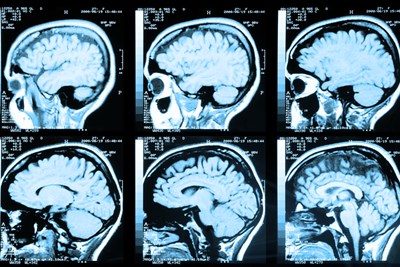Aneurysms are weak spots in your blood vessels that can lead to an abnormal bulge that fills with blood. If this bulge ruptures, it can cause internal bleeding that can lead to death if not treated immediately. Ruptured aneurysms are responsible for the deaths of over 13,000 Americans each year.
Most aneurysms will not present any symptoms until they rupture. Rarely, there may be some swelling or pain around the site of the aneurysm if it is located near the surface of the skin. If your aneurysm ruptures, symptoms will vary depending on the type and location of the aneurysm. The most common types of aneurysms are brain and abdominal aortic aneurysms.
Brain Aneurysm Symptoms
An unruptured brain aneurysm will rarely produce any symptoms. However, if it is large enough, it could press on brain nerves and tissues, which could cause some symptoms such as:
- Numbness or weakness on one side of your face
- Dilated pupils
- Drooping eyelid
- Pain above or behind an eye
- Change in vision or double vision
When a brain aneurysm ruptures, the most common symptom is a sudden, severe headache. Other symptoms you might experience include:
- Nausea and vomiting
- Seizure
- Confusion
- Sensitivity to light
- Blurred or double vision
- Stiff neck
- A drooping eyelid
- Loss of consciousness
Because a brain aneurysm can lead to bleeding in the brain, which can be deadly, it is important to seek medical attention immediately if you or someone you’re with begins experiencing a sudden, extremely severe headache, loses consciousness, or has a seizure.
Abdominal Aortic Aneurysm Symptoms
An abdominal aortic aneurysm is the most common type of aortic aneurysm. It forms in the lower part of the aorta, which is a major blood vessel that carries blood from your heart to your vital organs. Abdominal aortic aneurysms can be life-threatening as well, since the aorta is the body’s main supplier of blood and has the potential to cause dangerous amounts of internal bleeding.
Aortic aneurysms are also very difficult to detect since they usually grow very slowly and do not present symptoms until they rupture. If the aneurysm grows larger and becomes more at risk for rupturing, some people will experience symptoms, such as:
- Back pain
- Pulsating feeling near the navel
- Deep, constant pain in the abdomen
See your doctor if you experience any of the above symptoms. Additionally, you should be screened for aortic aneurysms regularly if you are 60 years or older and have other risk factors for developing an abdominal aortic aneurysm. These include smoking, being male, and having a family history of abdominal aortic aneurysms.
Abdominal ultrasound can detect abdominal aortic aneurysms before any symptoms are ever present. Men who are between the ages of 65 and 75 and who have ever smoked cigarettes are recommended to have at least a one-time screening for abdominal aortic aneurysms.



